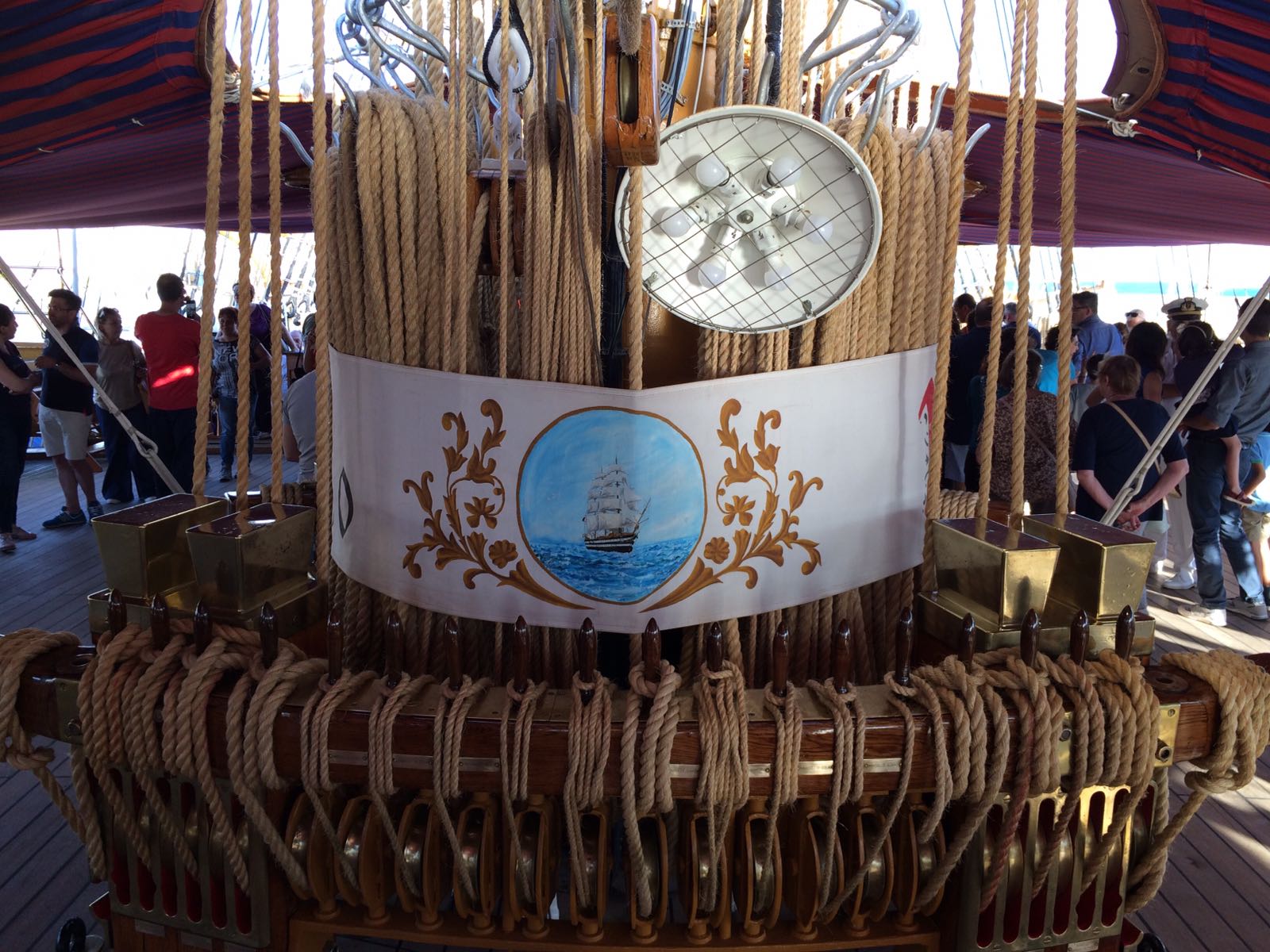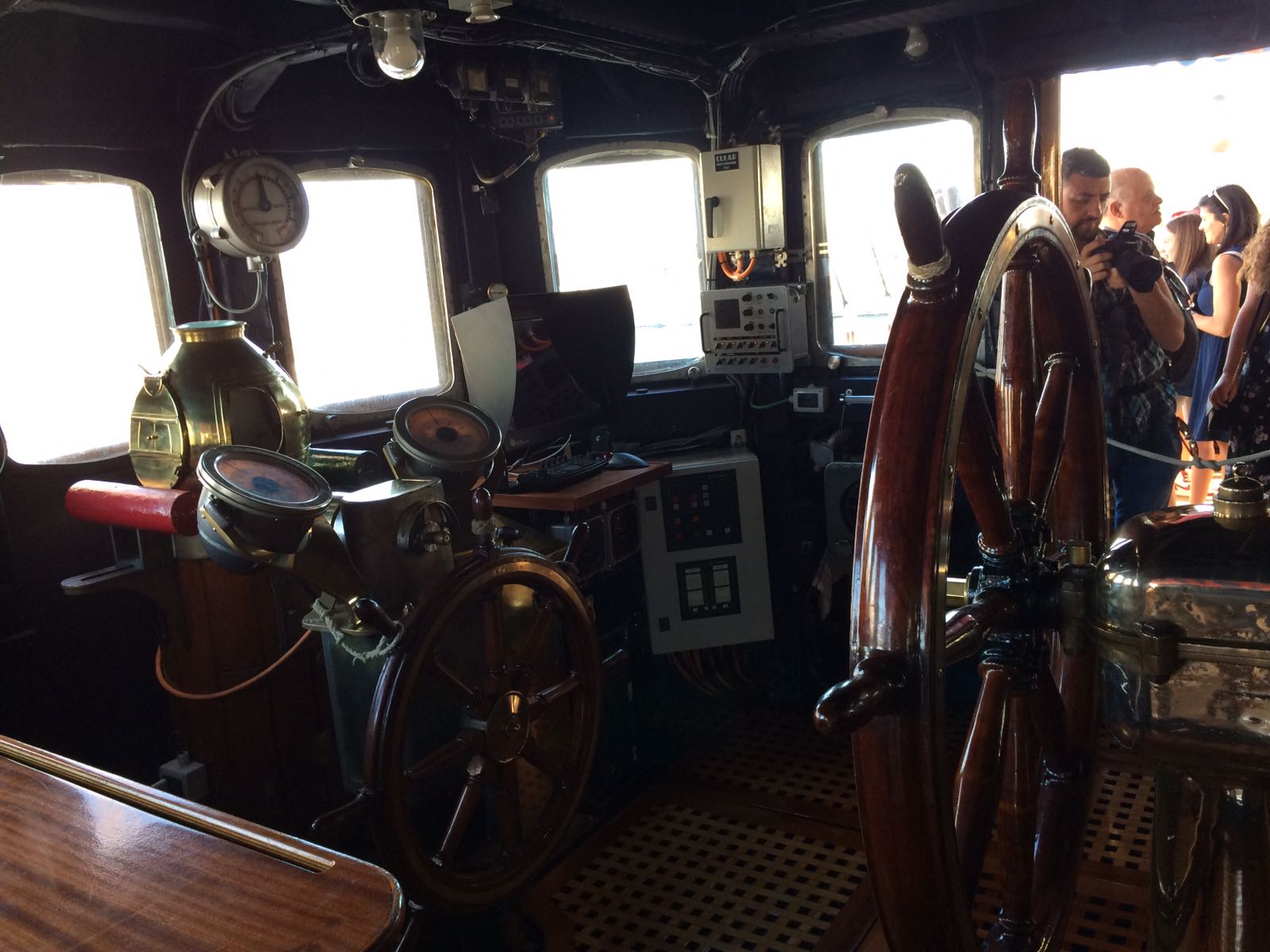 Jun
18
Jun
18
The most beautiful ship in the world – Vespucci
- 18 June 2018
- 0 Comment(s)
The Ship Amerigo Vespucci was built in 1930 at the Regio Cantiere Navale of Castellammare di Stabia town, near Naples, where it was launched on February 22, 1931, on the 50th anniversary of the naval academy’s foundation. It is still in use as a school ship. The ship also carries out the role of ambassador for culture and Italian naval tradition, as it takes part in several important activities and events all over the world.
The vessel is a 101m long steel hull sailing ship (70 meters on waterline), she usually carries 24 sails made of canvas (2 to 4 mm.), for a total surface of 2.600 square meters. The main-mast is 54 meters tall above the sea level, the maximum draught is 7.30 meters and the displacement is 4.100 tons. The hull is painted black with two white stripes in reference to the two gun decks of the original ships the design is based on. Originally it had 2-stroke 6-cylinder FIAT Q 426 engines, but in 1964 these were replaced with two 4-stroke, 8-cylinder FIAT B 308 ESS diesel engines. The newer engines generate electric power for one electric propulsion motor.
Its motto is “Not those who begin but those who persevere“, a sentence attributed to Leonardo Da Vinci.
In the mid 20’s of the 20th century, the Italian Navy tackled the problem of the ships modernization for the training of the Naval Academy Cadets. It was considered that the best impact with the marine environment was to live aboard a sail ship, which requires the widest knowledge of the natural elements.
The School Ship “Amerigo Vespucci” was built and fitted out in the Royal Shipyard of Castellammare di Stabia according to a design by Lt. Colonel of the Naval Engineers Francesco Rotundi. Laid down on 12 May 1930, launched on 22 February 1931, the ship was commissioned as School Ship the next 6 June, joining her sister ship Cristoforo Colombo.
In July of the same year she started her first training cruise in North Europe. Afterwards, she was extensively refitted in the years 1951, 1958, 1964, 1971, 1984, 1990, 1997 and in the year 2000 when the spaces for the female personnel were created.
The training on board the Amerigo Vespucci Ship represents a key element in cadet professional development, passing on the Italian Navy’s core values of love for the sea, ethics, loyalty and honor. Navy cadets learn the basics of seamanship. They can put into practice what has been studied so far in the books by getting familiar with the marine equipment, climbing up the masts, and using the sextant to calculate the position of the ship with the stars.
Since she entered service the ship has carried out training cruises every year, except for 1940, because of the war events, and for the years 1964, 1973 and 1997 for the works. The training activity is carried out mainly for the Naval Academy Cadets, but also for the Students of the Military Naval School “Francesco Morosini”, Helmsmen as well as youth members of Sailing Associations such as the Italian Naval League and the Italian Sail Training Association.
Besides several short cruises in the Mediterranean, mostly made in spring and autumn, from 1931 to 2006 the Amerigo Vespucci performed 74 training cruises for the 1st Class Cadets of the Naval Academy: 40 in North Europe, 21 in the Mediterranean, 4 in the East Atlantic, 7 in North America and 1 in South America within the only circumnavigation of the globe carried out between May 2002 and September 2003. On this occasion, the ship was involved in the activities relevant to the New Zealand America’s Cup.
 The summer training cruises have a medium length of about three months. As concerns the formative-training aspect, the Cadets extend their basic knowledge of navigation and life at sea, included the use of the sextant to fix the ship’s position. Therefore, the Amerigo Vespucci can be considered a “school of life” and an indispensable training instrument for the future Naval Officers.
The summer training cruises have a medium length of about three months. As concerns the formative-training aspect, the Cadets extend their basic knowledge of navigation and life at sea, included the use of the sextant to fix the ship’s position. Therefore, the Amerigo Vespucci can be considered a “school of life” and an indispensable training instrument for the future Naval Officers.
 All the sails are traditional canvas sails, and all the ropes of the rig are traditional hemp ropes; only the mooring lines are synthetic, to comply with port regulations.
All the sails are traditional canvas sails, and all the ropes of the rig are traditional hemp ropes; only the mooring lines are synthetic, to comply with port regulations.







